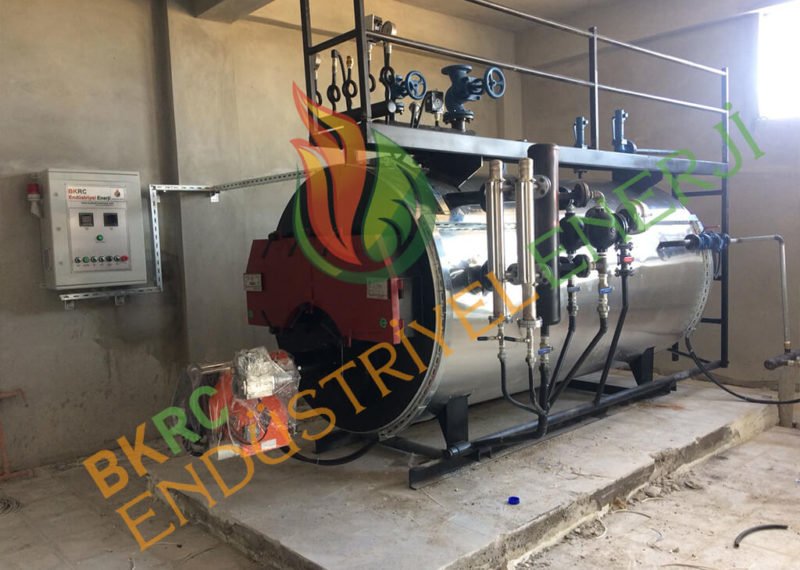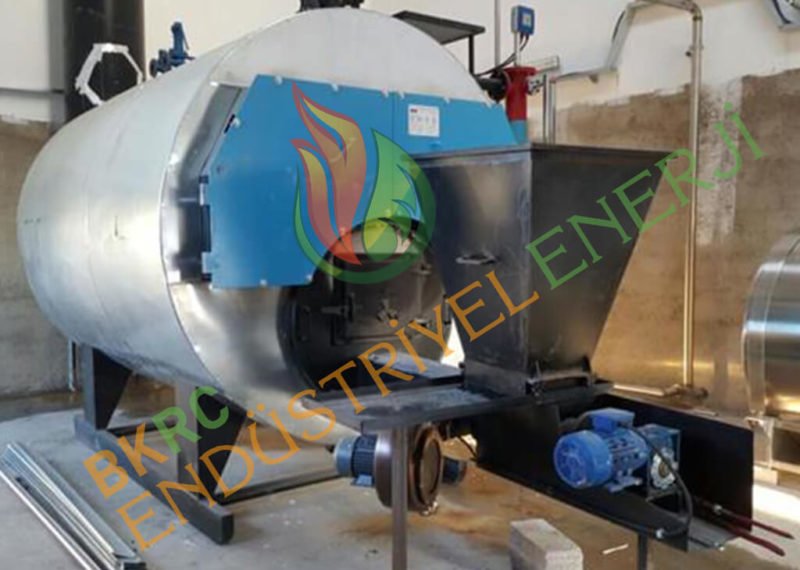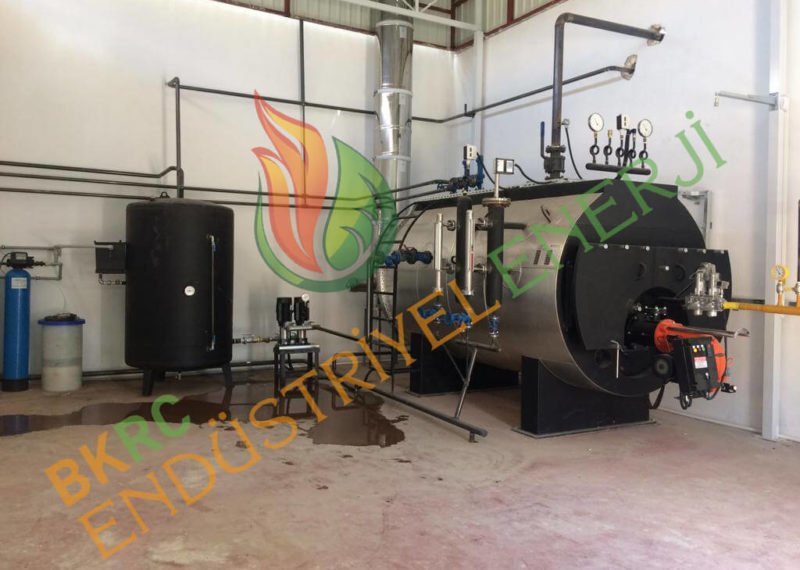History of Steam Boilers
Water vapor has been known since the fire was found and started to be used; because steam is formed spontaneously when extinguishing with water or during cooking. The idea of using water vapor in the technique extends to Archimedes (287 – 212 BC), who designed a steam ball. Leonardo da Vinci (1452 – 1519) was the first person to make calculations on this subject. He calculated that a 8 kg weight cannon can be thrown up to 1250 meters away with a steam ball. Denis Papin (1680) was the first to apply the pressure cooker in practice. This first pressure vessel was equipped with a safety valve back then, after the prototype used in the first attempts exploded. Since 1770, the use of the steam machine has made it necessary to deal more closely with water vapor theoretically and practically. James Watt and Carl Gustav Patrik de Laval, who have practically produced and marketed a steam engine, have become assets thanks to their inventions. The advantage of steam over water as a heat carrier fluid is that its thermal capacity is quite high.
The thermal capacity of the steam is 6 times higher than the thermal capacity of the water in the same mass and temperature. The reason for this is that a large amount of evaporation energy is required for the formation of steam and this energy transferred to steam is released again by condensation. An example of this is boiling water. In order for the water in a teapot to be evaporated, heat intake takes a long time. The energy transferred during this time is used only for evaporation, the temperature of the water or steam does not change (100 ° C at normal pressure).
Steam boiler is a system that allows water to evaporate by heating. Coal, diesel, natural gas and other fossil fuels are made in steam boilers.
Steam boiler types : Options are semi-cylindrical steam boilers and scotch type steam boilers. Steam boilers are steel steam boilers. Steam boilers are required quite often in industrial plants. Heat transfer process is high. Transmission is easy and pumping is not required. The energy required for the transportation of water vapor is also not required. It is for transport and transmission. Steam boilers carry high temperature heat energy. Besides steam boilers, there are also types of flame tube steam boilers and water tube steam boilers.
During Steam Usage
• Being an Ideal ISI Carrier
• Being Environmentally Friendly
• Energy savings can be achieved through recycling.
• Transport of fluid
.
• It works temperature control very precisely.
• It includes the risk of corrosion in the steam installation.
• Heat losses are low, so it is an ideal heat carrier. Conveying with small ones
due to heat losses are less than other rechargeable systems. Thermodynamic properties
is good.
• Investment expenses are low, small diameter pipe is used, insulation is done less, cheap installation.
• It is steam safe, that is, it has no flammability feature. It is a sterile fluid.
• Steam is environmentally friendly. It is pure substance.
The disadvantage is; works under high energy and pressure.
What are the Uses of Steam Boilers?
• in petrochemistry
• Electricity generation in thermal power plants (Steam TURBINES)
• We sprayed with the Sterilization Purpose in the food industry.
• In the building materials industry
• Steam Heating Systems (heating installations)
• In refineries
• Chemical Processes
• In the food industry
• Sterilization (PACKAGING FOOD and) • In the fertilizer industry
• In rubber products and manufacturing
• In the building materials industry
• In the paper industry
• Wood operation and shaping
It is used in many other places.
Classification of Steam Boilers
1. According to the places of use:
• Fixed boilers
• Portable boilers
• Locomotive boilers
• Ship steam boilers
2. Steam boilers according to boiler pressures:
• High pressure boilers
• Super critical pressure boilers
3. By January type:
• External hearth boilers
• hearth furnaces
4. By type of fuel used:
• Coal-fired boilers
• Liquid FUEL Boilers
• Gas FUEL Boilers
5. According to the Consortium:
• Smoke pipe boilers1. Flame tube
2. Flame-smoke pipe
3. Water tube boilers
It is possible to classify the boilers according to different criteria.
a) Hot water boilers (heating boilers)
b) Boiling water boilers
c) Hot oil boilers
d) Steam boilers
1. Low pressure (0.5 bar)
2. High pressure (above 0.5 bar)
2. According to the water volume contained in the boiler:
a) Boilers with large water volumes
b) Small water volume boilers
c) Very small water volume boilers (steam generators)
3. According to the circulation of flame-smoke gases:
a) Flame tube, smoke tube, flame – smoke tube boilers
1 pass (single pass)
2 pass
3 pass
b) Water tube boilers
c) Flame tube-water tube boilers
4. According to the circulation of water:
a) Natural (natural) recirculating boilers
b) Forced circulation boilers
5. According to the fuel it burns:
a) Solid fuel burning boilers
b) Boilers burning liquid fuel
c) Gas-fired boilers
d) Fuel-fired boilers
to
Waste fuel (rotten gas) boilers
g) Electric heat or steam boilers
6. According to the burning cell (furnace) is selected:
a) Internal furnaces
b) External furnace boilers
c) Boilers with front furnace
d) Boilers with back stoves
Special Equipments
Condensate Tank
Degasser Tank
Water Treatment System
Reverse osmosis
Feed Water Pumps / Degasifier Pumps
Super Heater
economizer
Flue
For liquid fuels;
Main Fuel Tank
Daily Fuel Tank
Daily Diesel Tank
Fuel Pump
Filtering and Pumping Station
- Steam Production Capacity : 175kg / hour and 20.000kg / hour steam, special production between 10m³ – 175m³
Type : 3-pass, low pressure, full cylindrical, Scotch Type.
Külhan – Cehennemlik : It is made of boiler sheet.
Refractory Material : It is to apply for designing full combustion in Hell screen.
Material Inner Outer Shirt : Choose H1 and H2 quality boiler sheet.
Pipes : Boiler pipe.
Welding Quality : It is used by certified welders according to EN 288, EN 287-1.
Fuel Type : Liquid fuel
Certificates : ISO, CE, Welder Certificates
Warranty : 2 Years



